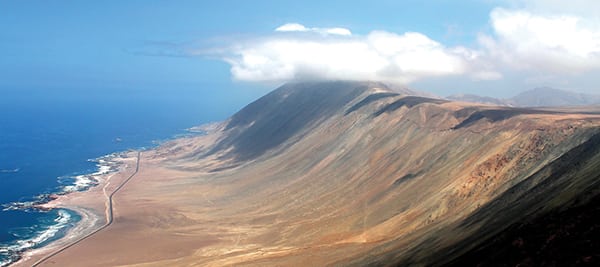Chile's Newest Hydro Plant Takes Shape in the Desert
Plans to build a pumped-storage hydroelectric plant in the world’s driest region won the approval of environmental regulators in Chile this December.
The unique 300-MW project proposed by Valhalla Energia involves the construction of a pumped hydro plant atop a coastal headland (Figure 2) located 100 kilometers (km) south of Iquique in northern Chile, which is home to some of Chile’s biggest mines. The $400 million Espejo de Tarapaca project will draw seawater through a tunnel for accumulation in natural cavities on the headland about 600 meters (m) above sea level using solar power. At night, the plant will generate power by relaying water down the same tunnel.
The Chilean company founded in 2011 said that the project has 50 mainly national investors. If all goes well, construction should begin in the second half of 2016, with operations beginning in 2020. The project still requires regulatory approval for its proposed $500 million Cielos de Tarapaca solar photovoltaic plant, a 600-MW installation needed to pump the seawater.
Chile’s parched Atacama Desert, located in the north of the country and covering an area of about 105,000 square km, is thought to have the world’s best solar resources. Among projects in the pipeline is Abengoa’s 110-MW Atacama I concentrating solar power plant, a solar power tower project. However, that plant’s future is now in doubt as Abengoa undergoes a reorganization.
